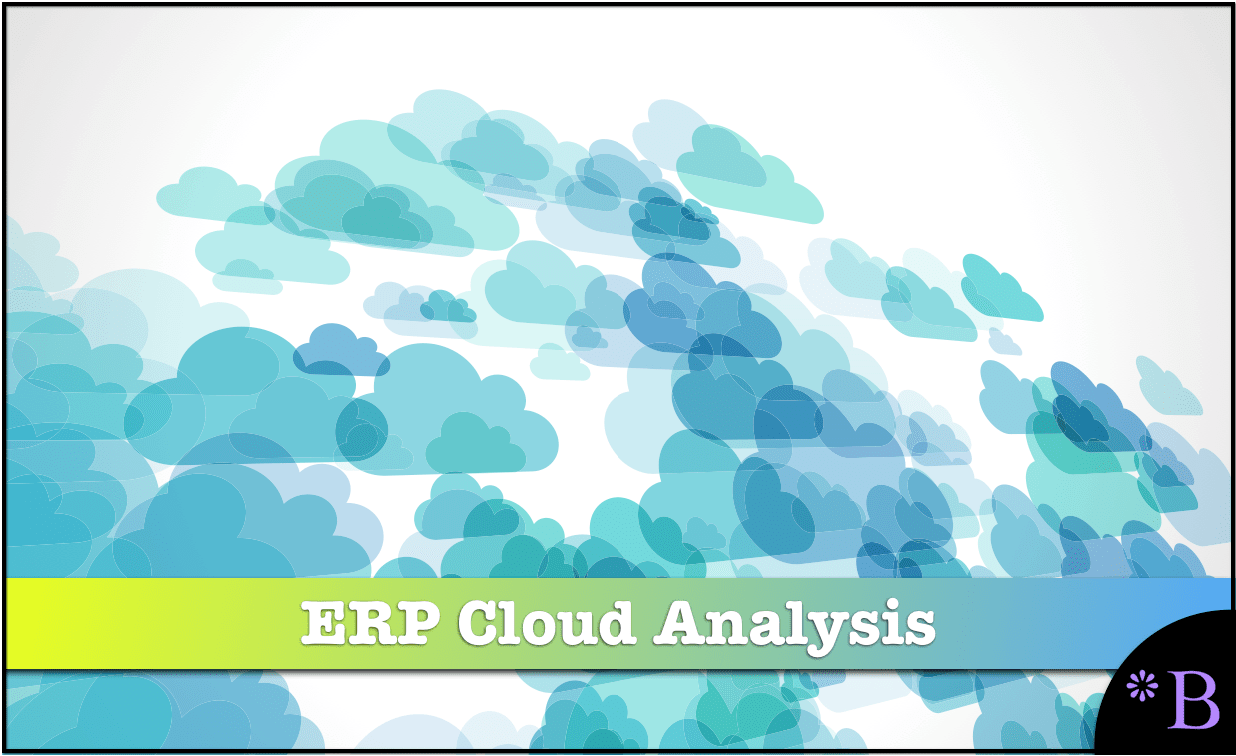The Top ERP Cloud Analysis Complications
Executive Summary
- ERP cloud analysis is often a process that just declares the company is ready for a cloud ERP system.
- This article explains the top complications when trying to obtain an unbiased outcome.

Introduction
ERP cloud analysis are fraught with complications. In this article, we cover these complications and how we surmount them.
Our References
See our references for this article and related articles at this link.
Complication #1: Selecting a Conflicted ERP System Selection Advisor
This is normally not a mentioned item. However, there is a greater probability that the company will select a financially biased ERP system selection advisor for their ERP readiness assessment that has financial relationships that it does not disclose to you. This means that they will most often rig the ERP cloud analysis to state that the company is ready for an ERP system. Furthermore, the incentive structure at many ERP vendors is to push their cloud versions of their ERP systems over their on-premises version. Oracle is particularly known for creating these types of incentives.
Complication #2: Not Questioning The Implications of Cloud ERP
Cloud ERP versions will nearly always have less functionality than the on-premises version of the ERP system. The cloud versions are also newer in their development, which means the applications are overall less mature. ERP systems don’t fit and more simple systems like CRM due to their much higher complexity. If we think of the most successful cloud or SaaS systems, they have tended to be applications on the more simple end of the spectrum. CRM, invoicing, email (Gmail is a type of SaaS application), and similar. This is not to say there are no good cloud ERP systems, but the ERP vendor, IT implementation, and software selection advisor tend to gloss over these details. That is, the ERP cloud analysis that the customer pays for will tend to minimize this issue. Some ERP vendors or IT consulting firms offer ERP cloud analysis services, which is, of course, ludicrous. One cannot rely on an ERP cloud analysis from a firm with a financial bias to either sell that cloud ERP system or win the cloud ERP implementation business. However, software buyers are routinely tricked by these offers.
Specific Issue: Upgrade Implications of Cloud ERP
Cloud ERP systems supposedly have transparent upgrades. That is, the users are not supposed to notice when the upgrade occurs. For example, when Google upgrades Gmail, users normally don’t notice. However, Gmail is a simple application compared to an ERP system, and Gmail does not have any custom development placed into the application by the users. This is something I cover in the article The Realities of Upgrading SAP and Oracle Cloud ERP. However, this transparent upgrade proposal has not worked in reality. Companies with cloud ERP systems often report significant instability caused by these upgrades. This topic is greatly minimized in the IT media.
Complication #3: Not Considering Cloud Lock In
Cloud and SaaS were originally conceived of as a way for smaller vendors to make a fairer offering to customers and provide better pricing transparency and less lock-in, giving the vendors that offered it a competitive advantage. However, as the cloud has matured, the larger vendors co-opted cloud concepts without offering real cloud. For example, many ERP vendors do not have transparent pricing, they do not offer multitenancy (while still calling their software cloud), and rather than use their cloud offering to decrease lock-in, they have used the cloud to increase lock-in. While in the past, customers could cancel or not review support if they were dissatisfied with the vendor, many vendors now combined hosting with support and sign customers into 6-year contracts. How the cloud has been converted into reducing freedom for software vendors when it was originally intended to do the opposite is one of the little covered stories of the change from on-premises to cloud software.
Conclusion
The ERP industry is designed to get customers “on the ramp” to implement ERP systems and extract the most out of them. The ERP cloud analysis is, in nearly all cases, just a fake process where the advisor states that the company is ready to move to an ERP cloud system. This is then followed by an exposition of how good ERP systems are and how good the cloud is. This extractive model is one reason that the ROI on ERP systems is typically so low. This does not have to be the case, and there are many ways of changing this.
How We Do Things Differently
Our ERP cloud analysis focuses on what the company is ready for and is not designed to simply onramp people to a cloud ERP system. And unlike all the ERP advisors, we are a true research entity. Being dedicated to research means focusing on what is true and using evidence to draw conclusions.